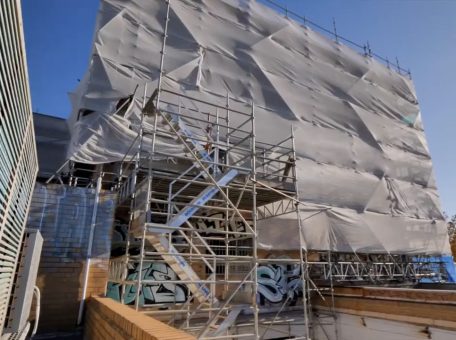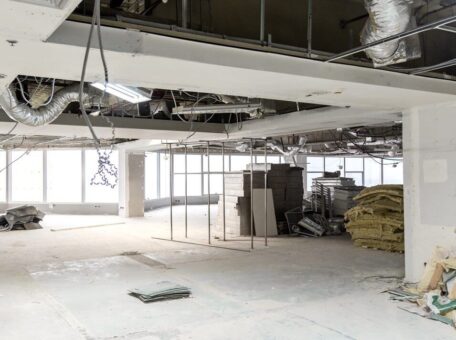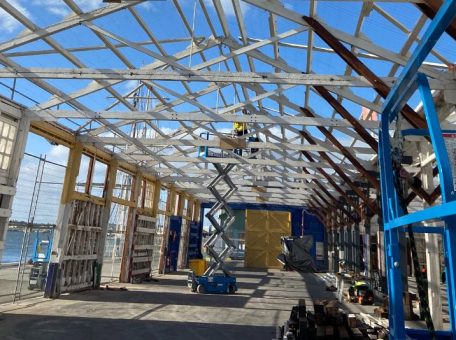
Safety Considerations for Commercial Asbestos Removal in Live Environments
Asbestos removal becomes significantly more complex when people are present on-site or in the vicinity during works. Unfortunately, this can’t always be avoided.
In this article, we outline the key safety considerations for commercial asbestos removal in live environments – and how to assess whether your contractor is equipped to manage the unique challenges these projects present.
Understanding the Core Risks
Well-executed planning and controls are essential to protect people on site, meet regulatory obligations, and avoid unnecessary disruptions.
In live environments, several specific risks need to be actively managed:
- Fibre release into occupied or adjacent areas: Without proper containment, asbestos fibres can migrate beyond the designated removal zone.
- Inadvertent access to work areas: Building occupants or contractors may unknowingly enter restricted zones.
- Cross-contamination via HVAC systems: Uncontrolled ventilation systems can circulate airborne fibres to other areas.
- Undocumented ACMs: Asbestos-containing materials not identified in the original survey may be encountered during works.
- Operational interference: Poor planning can disrupt business continuity or public services if not well-coordinated.
Identifying and addressing these risks early is the first step in managing a live asbestos removal project safely and efficiently.
Asbestos Removal Compliance and Licensing
In Western Australia, the removal of friable asbestos must be carried out by a contractor with a valid Class A Asbestos Removal Licence. This licence ensures the contractor is qualified to handle the highest-risk asbestos materials, such as sprayed coatings, pipe lagging, and friable insulation.
Even when asbestos is classified as non-friable (such as bonded sheeting), working in a live environment introduces greater risk. If these materials are disturbed, such as by cutting, breaking, or undetected deterioration in older structures, they can still release harmful fibres, particularly in confined areas.
A Class A licence provides assurance that the contractor has the right systems, training, and experience to manage all potential asbestos removal scenarios safely.
Before work begins, ensure your contractor has:
- An appropriate license for the work being undertaken.
- Submitted WorkSafe WA notifications at least five business days in advance.
- A clear and site-specific asbestos removal control plan (as required under WA WHS Regulations).
Contractors must also follow regulatory requirements under the Work Health and Safety Act 2020, with full documentation maintained and accessible on-site.
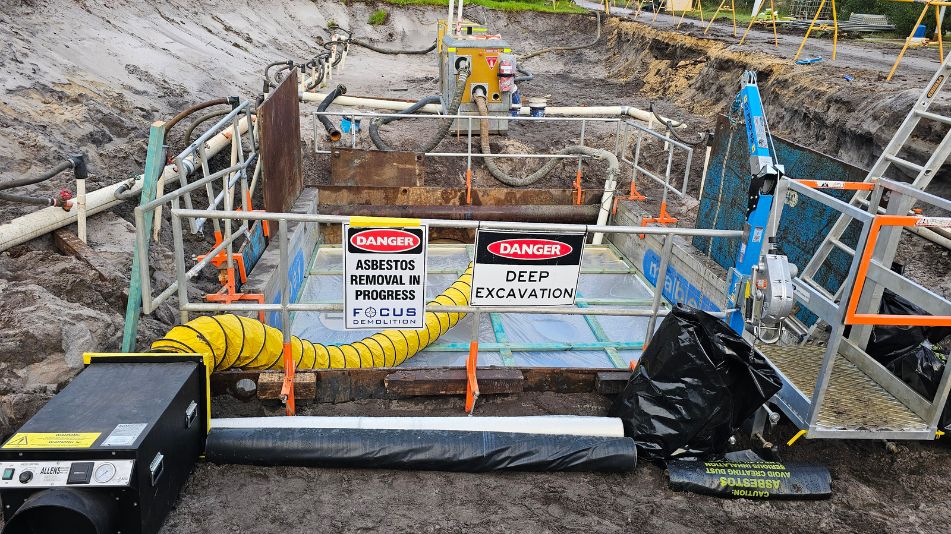
Planning for Safe Asbestos Removal
Removing asbestos while a site remains operational adds layers of complexity that must be addressed during the planning phase.
Your asbestos removal contractor should conduct a site-specific risk assessment and prepare a control strategy that considers how the space is used day-to-day.
Effective site planning includes:
- Identifying asbestos locations relative to occupied or shared spaces
- Mapping out exclusion zones and safe pathways
- Scheduling works to minimise disruption to operations
Clear communication protocols should also be established:
- Briefing relevant personnel or tenants on the work schedule
- Using clear signage to indicate restricted areas
- Coordinating with facility managers or building supervisors to align access and operational needs
Proactive communication reduces the likelihood of access breaches and keeps all stakeholders informed throughout the project.
Containment and Air Quality Control
Containment is the frontline defence in live asbestos removal projects. When people are nearby, it’s critical to isolate the removal zone and prevent fibre migration.
Key control measures include:
- Negative pressure enclosures to keep fibres contained
- Airlocks and decontamination units for controlled entry and exit
- Sealed barriers and sheeting to close off the workspace
- HEPA-filtered extraction systems to filter airborne fibres
Air monitoring should support all containment efforts:
- Baseline monitoring prior to removal
- Continuous real-time monitoring during works
- Clearance testing post-removal to confirm safety
These measures ensure work can proceed safely without affecting adjacent spaces or occupants.
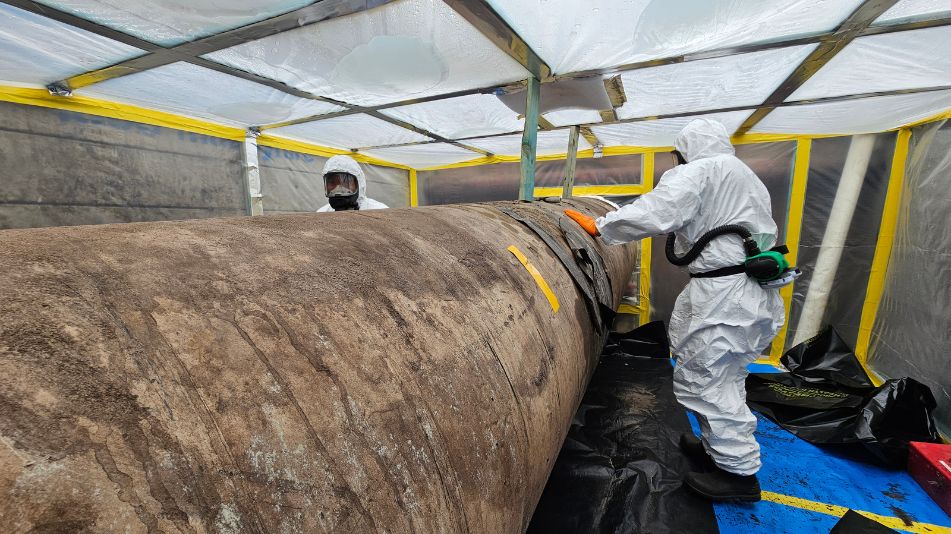
Managing Unexpected Situations
Even with the best planning, live environments can present unforeseen issues. Contractors must have contingency procedures to respond to situations such as:
- Discovery of previously unidentified asbestos
- Containment breaches or unauthorised access
- Elevated airborne fibre levels during removal
When these occur, your contractor should:
- Stop work immediately and secure the area
- Notify relevant authorities (e.g. WorkSafe WA)
- Update site documentation, including their asbestos removal control plan and monitoring logs
- Reassess and adjust control measures before resuming
Being prepared for unexpected scenarios reduces downtime and ensures compliance is maintained at all times.
Choosing the Right Asbestos Removal Partner
Safe asbestos removal in a live environment requires more than licensing – it demands proven systems, experienced supervision, and constant communication.
At Focus Demolition, we prioritise the safety of our team, clients, and the public above all else. We hold a Class A Asbestos Removal Licence (WUA165) and have significant experience working in live commercial and industrial environments where safety and precision are critical.
Our team works to the strictest safety protocols, and we regularly invest in training, equipment, and containment systems to maintain the highest standards across every project.
Planning asbestos removal on an active commercial or industrial site? Contact Focus Demolition to discuss a removal strategy that aligns with your compliance, safety, and operational requirements.

